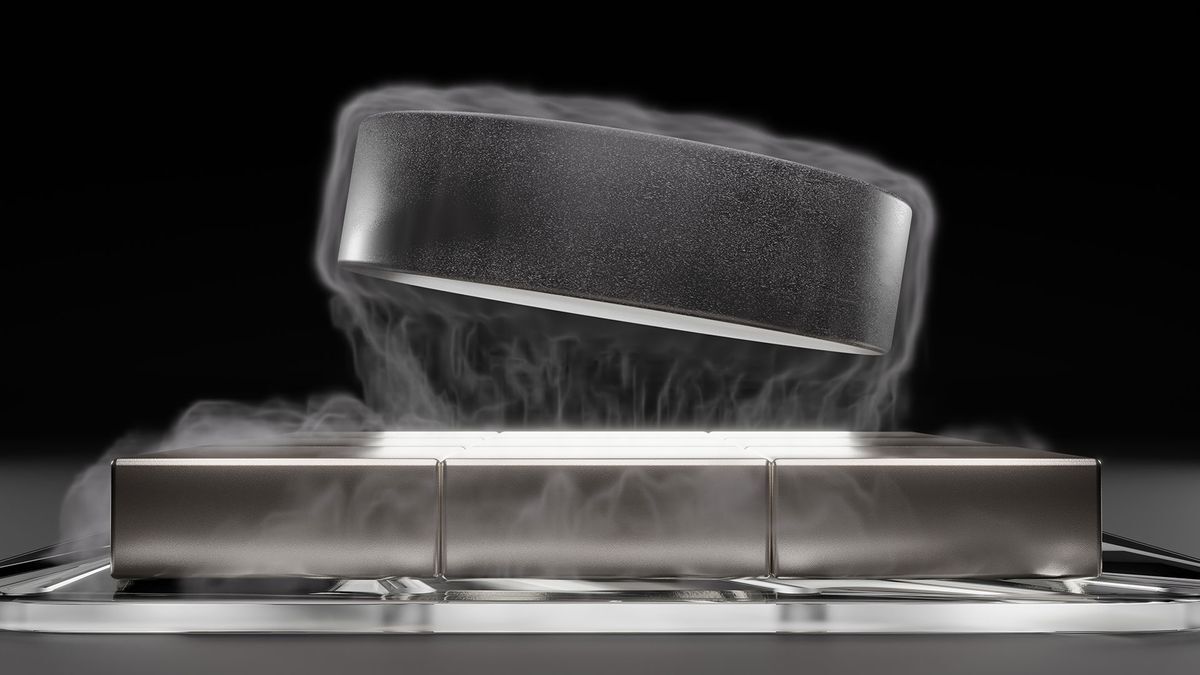The fact that this has been replicated is amazing!
If you want to see all the conflicting findings and by-the-minute updates, this post is great: https://forums.spacebattles.com/threads/claims-of-room-temperature-and-ambient-pressure-superconductor.1106083/page-11?post=94266395
I’m very much not an expert, but my read of this is: most replication efforts have mostly failed when it comes to making a working room temp superconductor (meaning conducts electricity with no resistance). However, groups are increasingly seeing some of the other characteristics expected from superconductors, and it appears that the failures might just be caused by using an unrefined technique.
So time will tell, but this is probably a big advance, but not itself a world changer just yet.
It’s at least reassuring it wasn’t just a hoax this time.
wikipedia has a nice little table on all ongoing research as well.
Although it is worth noting that one of these attempts is just in computer simulation.
The Berkeley lab hasn’t confirmed their results against a physical sample.
Heres my analysis of what all has actually happened from a similar post with this article yesterday
From reading through the article and it’s sources, here’s what seems to be the case:
-
a simulation at Berkely National Labs with their supercomputing capabilities has verified that LK-99 theoretically has superconducting properties
-
Argonne National Labs also seems to be involved and doing stuff, but nothing official from them yet, besides maybe helping with simulation stuff
-
a Russian scientist is working on improving the synthesis process and has made some low purity samples that produce the Messnier effect, but higher purity than the original I think. It’s all from Twitter (x) threads and a little hard to follow. Her handle is @iris_IGB
-
China National Lab (Shenyang) first principles analysis suggest gold and silver doping LK-99 will make superconductors as well. [Directly copied from article]
-
Under the guidance of Professor Chang Haixin, postdoctoral Wu Hao and doctoral student Yang Li of the School of Materials Science and Technology of Huazhong University of Science and Technology they have successfully verified and synthesized the LK-99 crystal. It can be magnetically levitated for the first time and this is shown on a bilibili video. They expect to realize the true sense of non-contact superconducting magnetic levitation. [Also Directly copied from article]
Direct source for last 2 points and also more info in general
https://www.nextbigfuture.com/2023/07/tracking-lk-99-superconductor-replication-efforts.html
I would give LK-99 a 95 percent chance of either being a true rook temperature superconductor or directly leading to the discovery of a true rook temp superconductor in the next few years.
A few caveats however: according to the simulation, the conductive pathways only forms when the copper bonds to a specific higher-energy spot in the crystal, so getting higher purities will likely need a fair amount of innovation on the production process. There are some other complications with the synthesis, so even if it is fully and properly confirmed with more papers and such it will still likely be a while before it can start to be used effectively.
yea, even if LK-99 is a room temp super conductor, i dont it expect to be THE room temp super conductor… but it will prove its possible, and provide pathways to improve it (either advancing LK-99, or showing how altering a material to introduce internal strain can cause it in other compounds)
The proof of concept alone will get so much money this way, i’m betting that we’ll have either 3, 7, or 358 promising compounds or materials in a year or 3! Im getting cautiously optimistic here :-)
What argonne ends up saying will have huge weight for me. Hope to hear them chime in.
-
I swear I saw the opposite headline less than 12 hours ago.
I’m very skeptical, we have seen so many claims of room temperature superconductivity that have turned out to be fake… but considering that Berkeley National Laboratory replicated it, this makes me far more hopeful.
LBNL did not replicate, they simulated the material and found it promising. The lattice of the materials need some sort of substitution to happen in an less likely way, someone with knowledge will have to summarize better.
This is how it starts though. Smaller labs do simulations and get promising results which gets the attention of bigger labs with the capacity for actual experimentation.
We’re talking about Lawrence Berkley National Laboratory doing the simulation here. That is not a small research facility.
Seems to be exactly the opposite of what you describe. Actual experiment shows promise, then large lab runs simulation.
There are lots reasons why a replication attempt might fail despite the stuff being a superconductor.
The process for producing the material isn’t reliable, so that doesn’t tell us much. They might just have been unlucky.
This is unexpected.
But welcome, indeed.
A practical superconductor is a huge deal, it would drastically change the way we deal with electrical power distribution and electromechanical applications. So any development is going to be big news. Though we’re not talking about an actual working conductor, it’s just excitement over research advancement, yeah? I’ve seen this kind of “big news” before in other tech sectors and time often proves it unworthy. If it does present a big step toward a practical superconductor that’s great, but I wouldn’t count any eggs yet.
I would say this is likely not a practical super conductor… But it may well be the first ever room temperature super conductor.
The first semi-conductors were not practical either, but we can all see where that led!
but we can all see where that led!
It led to the LED!
I would say this is likely not a practical super conductor… But it may well be the first ever room temperature super conductor.
Yes of course it would be a big deal if they create one to begin with. However if it’s difficult and expensive to produce, that’s not much help. It has to be mass producible and inexpensive to have industrial significance. I mean we already have expensive solutions. Don’t need any more of those.
The first semi-conductors were not practical either, but we can all see where that led!
I don’t know that semiconductors are a good parallel. Growing the crystals dates back to the early 1900s and was never an expensive or technologically difficult process. Doping silicon to create devices like diodes and transistors was something new, but was not exceedingly expensive or a great technological challenge. The migration to chips which require lithographic doping was more of a challenge.
In any case semiconductor devices were practical shortly after development. One of the first consumer products that used them was the “transistor radio” which was inexpensive and came out shortly after invention of the technology.
The benefits of a room temp super conductor mean that it would be produced at scale for price points well above standard. It’s that big a deal in performance improvement.
The paper’s method is fairly messy, low yield, and brand new… But it’s also not that complex of metallurgy afaik. I would not be surprised to see iterations on method that scale well.
Regardless: if it’s true then it proves it’s possible… Which wasn’t guaranteed until now.
Where were you, the day that everything changed? This is likely it, folks. If this pans out, it’ll be jetpacks and mimosas on the Moon, Jetsons’ style. Holy shit. We thought the computer age was something, this is going to be Something Else
Where was I? On the toilet.
Sat in my chair, waiting for Baldur’s Gate 3 to drop
Same
Maybe, there’s still important questions. Will it scale? Preliminary tests only transfered mA’s before the super conductivity breaks down. So can you layer the material to get higher amps? Will cables have to be made in one continuous part or will the super conductivity work across joined cables
deleted by creator
This material likely isn’t it but it demonstrates that room temp superconductors exist
I feel like I’ve seen enough to say that this is likely real and you are probably correct. I’m struggling to figure out how to prepare for this though. Are there companies or industries that we should be investing in or something?
Hitch your tits and pucker up. We’re entering a new age of industry. Much like the original Industrial Revolution, technology is going to advance at an extremely rapid pace. Fusion, quantum computing supremacy. Just… wow. How far off is general AI with this new room temperature superconductor?
Fusion is no closer than ever before, and AGI is hilariously over hyped. Also no closer than ever before.
And Fusion is pretty close to begin with. Commonwealth Fusion is well within their purpose time table so far. They don’t need any new superconductors for their project.
Fantasy
Stupid question probably - is computing power what is holding back general AI? I’ve not heard that.
What’s holding back AGI is a complete lack of progress toward anything like intelligence. What we have now isn’t intelligent, it’s multi-variable probability.
It’s not that it’s not intelligent, it’s that predictive language models are obviously just one piece of the puzzle, and we’re going to need all the pieces to get to AGI. It’s looking incredibly doable if we figured out how to make something that’s dumb but sounds smarter than most of us already. We just need to connect it to other models that handle other things better.
You don’t speak predictively. It’s not one of the pieces, it’s a parlor trick.
The biggest hurdle is that we don’t actually know what intelligence really is at all yet, computationally. Most of the history of science has been repeatedly learning “but things were actually more complicated than originally expected,” so making claims that we’re soon to be able to replicate something that we don’t actually properly understand yet may be a bit premature. The desire to replicate human intelligence by a machine has been around since at least the 1200’s brazen heads, and yet for everything we’ve discovered since we’re still just beating our heads against a wall trying to sleuth out what it really is that makes us ‘think.’
deleted by creator
There is still heat generated by the act of computation itself, unless you use something like reversible computing but I don’t believe there’s any current way to do that.
And even then, superconducting semiconductors are still going to be some ways off. We could have superconductors for the next decade in power transmission and still have virtually no changes to processesors. I don’t doubt that we will eventually do something close to what you describe, but I’d say it’s easily a long way off still. We’ll probably only be seeing cheaper versions of things that already use superconductors, like MRI machines.
deleted by creator
I appreciate you revising your reply to be less harsh, I wasn’t aiming to correct you on anything I was just offering some thoughts, I find this stuff interesting and like to chat about it. I’m sorry if I made your day worse, I hope things improve.
I said superconducting semiconductors as just a handy wavy way to refer to logic gates/transistors in general. I’m aware that those terms are mutually exclusive, but thats on me, I should have quoted to indicate it as a loose analogy or something.
The only thing I disagree with is your assessment that computation doesn’t create heat, it does. Albeit an entirely negligble amount, due to the fact that traditional computation involves deleting information, which necessarily causes an increase in entropy, heat is created. It’s called Landauer’s principle. It’s an extremely small proportion compared to resistive loss and the like, but it’s there none the less. You could pretty much deal with it by just absorbing the heat into a housing or something. We can of course, design architectures that don’t delete information but I’m reasonably confident we don’t have anything ready to go.
All I really meant to say is that while we can theoretically create superconducting classical computers, a room temperature superconductor would mostly still be used to replace current superconductors, removing the need for liquid helium or nitrogen cooling. Computing will take a long time to sort out, there’s a fair bit of ground to make up yet.
deleted by creator
I think “rounding error” is probably the closest term I can think of. A quick back of the envelope estimation says erasing 1 byte at 1GHz will increase an average silicon wafer 1K° in ~10 years, that’s hilariously lower than I’m used to these things turning out to be, but I’m normally doing relativistic stuff so it’s not really fair assume they’ll be even remotely similar.
Really appreciate the write up! I didn’t know the computing power required!
Another stupid question (if you don’t mind) - adding superconductors to GPUs doesn’t really se like it would make a huge difference on the heat generation. Sure, some of the heat generated is through trace resistance, but the overwhelming majority is the switching losses of the transistors which will not be effected by superconductor technology. Are we assuming these superconductors will be able to replace semiconductors too? Where are these CPU/GPU efficiencies coming from?
deleted by creator
Semiconductors are used for transistors because they give us the ability to electrically control whether they conduct or resist electrical current. I don’t know what mechanism you’d use to do that with superconductors. I agree you don’t ‘have’ to have resistance in order to achieve this functionality, but at this time semiconductors or mechanical relays are the only ways we have to do that. My focus is not in semiconductor / IC design either so I may by way off base, but I don’t know of a mechanism that would allow superconductors to function as transistors (or “electrically controlled electrical connections”), but I really hope I’m wrong!
Simply throwing computing power at the existing models won’t get us general AI. It will let us develop bigger and more complex models, but there’s no guarantee that’ll get us closer to the real thing.
So a supercomputer simulation and a video from a team in China…
I’m no more skeptical but I’m certainly not sold yet.
It’s wild 😵💫
This seems promising, I can’t wait for my guy to eat his shorts.
0_0

















